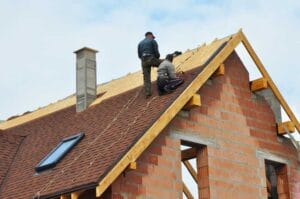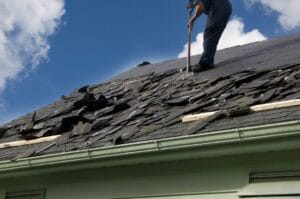
Attic ventilation is the process of bringing fresh air into an attic and exhausting stale air from it. It’s a very important part of roofing, because attics can get very hot in the summer, which can lead to wood rot, warped walls, and damaged shingles. In the winter, attics can also trap moisture
Exhaust vents are the most common type of attic vents. These are installed on roofs and along the eaves, usually at intervals of 20 to 40 feet.

Exhaust vents are the most common type of attic vent. These are installed on roofs and along the eaves, usually at intervals of 20 to 40 feet. Exhaust vents should be installed with a minimum vertical clearance of 3 feet or more above any object that could fall through them (e.g., ceiling joists).
The most common exhaust system consists of an open fan that blows air upward through holes in a wall near where it exits from your home’s structure into its attic space (or gable ends). The air then moves outwards through openings in other walls before exiting again at another location higher up on your house’s exterior walls; this keeps warm air from being trapped inside during winter months when temperatures may drop below freezing outside!
Intake vents pull in fresh air. They’re usually placed along soffits, or located in non-roof areas like gables and dormers.

Intake vents pull in the fresh air. They’re usually placed along soffits, or located in non-roof areas like gables and dormers.
You can also install intake vents in the attic floor for better ventilation if you have an existing roofline with no soffit or gable overhang.
Ventilation is important because attics can get very hot in the summer, which can lead to wood rot, warped walls and damaged shingles. In the winter, attics can also trap moisture.
Attics can get very hot in the summer, which can lead to wood rot, warped walls, and damaged shingles. In the winter, attics can also trap moisture.
Ventilation is a key part of maintaining your home’s energy efficiency—it allows you to control how much heat rises from your attic (or from other parts of your house), while preventing condensation build-up on cold surfaces such as windows or ceilings.
There are two kinds of attic vents: exhaust vents and intake vents
There are two kinds of attic vents: exhaust vents and intake vents. Exhaust vents are used to remove hot air from the attic, while intake vents bring in the fresh air. The type of vent you need depends on where it is located in your attic, so let’s take a look at each type:
- Intake Vents should be installed at ceilings or along walls/roofs where there are no ceiling joists above them; these types aren’t intended for removing heat from below but rather for bringing fresh air into finished spaces that would otherwise lose out on natural ventilation if not provided with an opening through which some heat can escape.
- Exhaust Vents should be installed at eaves or around roof rafters so they can draw excess heat out of higher levels within your house before it reaches lower levels where living quarters are located (this helps prevent overheating).
You can use attic ventilation to improve your home’s energy efficiency and comfort. But don’t forget that a well-sealed roof is also important.
CONTACT US right away to receive your personalized quote FOR FREE for attic ventilation, a new roof, or roof repairs. Our team of experts is always available to help with any roofing problems!




